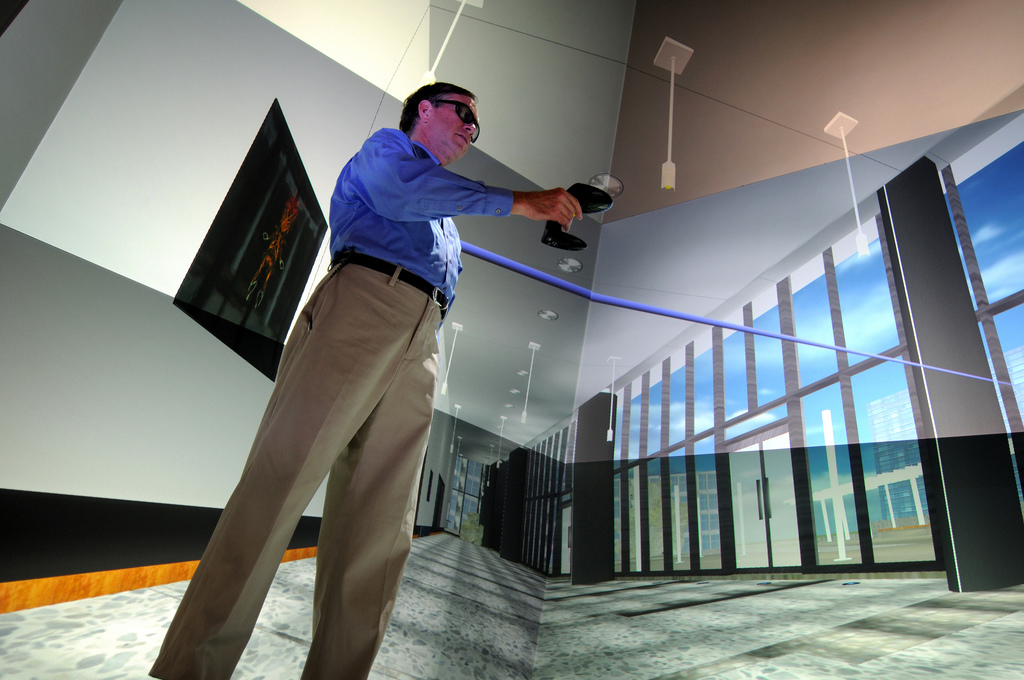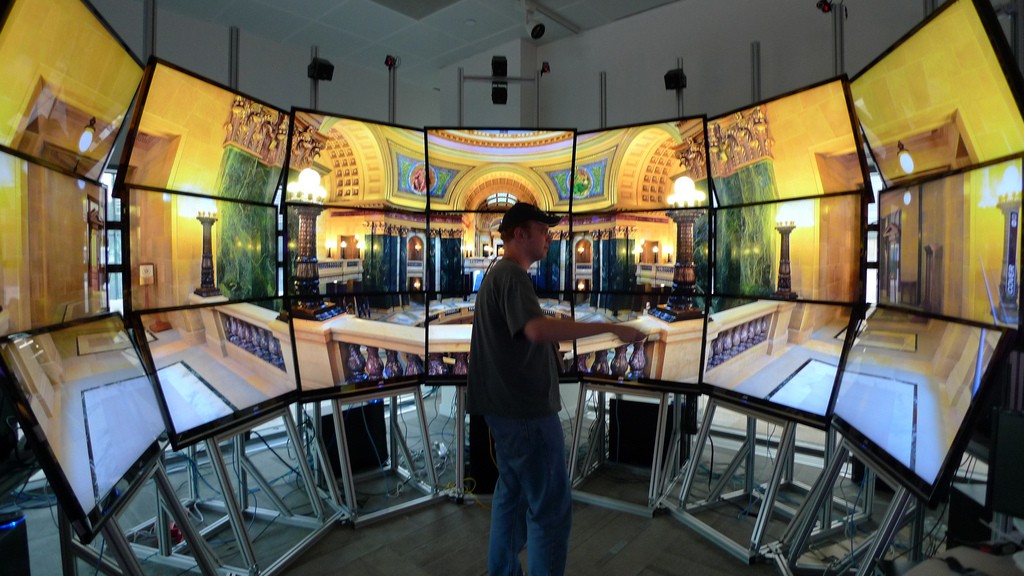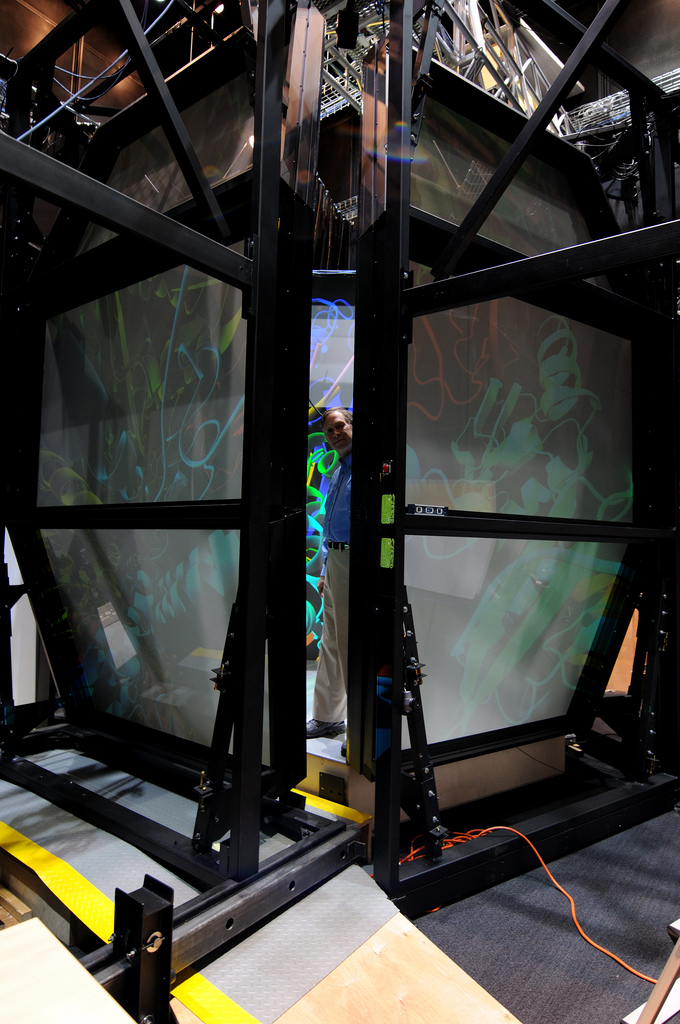Calit2 Virtual Reality Environment Nominated for First-Ever 'Immy' Awards
San Diego, Oct. 4, 2010 -- Immersive virtual reality has been a cornerstone of Calit2’s research into scientific visualization from the institute’s very beginning almost 10 years ago. The latest validation of that research may be handed out on Oct. 21 in Los Angeles, when Calit2 could win one of the inaugural Immersive Tech Awards, dubbed the ‘Immys’.
|
The nominations were announced Sept. 30, after ImTech’s Board of Advisors selected five nominees in each of five categories: Arts and Entertainment (whose nominees include film directors James Cameron and Peter Jackson); Health Sciences; Communication; Interfaces; as well as Research and Education.
The organization has opened up voting to the general public at http://www.immersivetech.org/summit/immys/.
|
|
“We designed the room to be flexible enough to be useful to scientists across a broad range of disciplines,” said senior research scientist Thomas A. DeFanti, Calit2’s Director of Visualization. “So far we have brought together interdisciplinary teams working in many fields, including art, archaeology, medicine, medical education, hospital planning, structural engineering, as well as computer science and engineering.”
According to DeFanti, who pioneered CAVE VR environments as co-founder of the University of Illinois at Chicago’s Electronic Visualization Laboratory, “the StarCAVE broke new ground with its price tag -- less than $1 million. That reduced the cost to less than three cents per projected stereo pixel for the StarCAVE, and our successor to the StarCAVE has now brought that down to barely one cent per stereo pixel.”
Indeed, Calit2’s newest immersive environment, the NexCAVE, is the first multi-LCD, 3D HDTV passive-stereo VR system, and the first full-scale one that is field deployable.
Calit2’s competitors in the research/education category includes he University of Leicester’s Second World ive Future Teaching (SWIFT) system; University Center of Greenville’s SimHub; Rensselaer Polytechnic’s Virtual Lap Band; and the UC Santa Barbara developer of the Allosphere, located in Calit2’s sister institution, California NanoSystems Institute.
Related Links
Immersive Tech Awards
ImTech
The StarCAVE: A Third-Generation CAVE and Virtual Reality OptIPortal
Media Contacts
Doug Ramsey, 858-822-5825, dramsey@ucsd.edu



